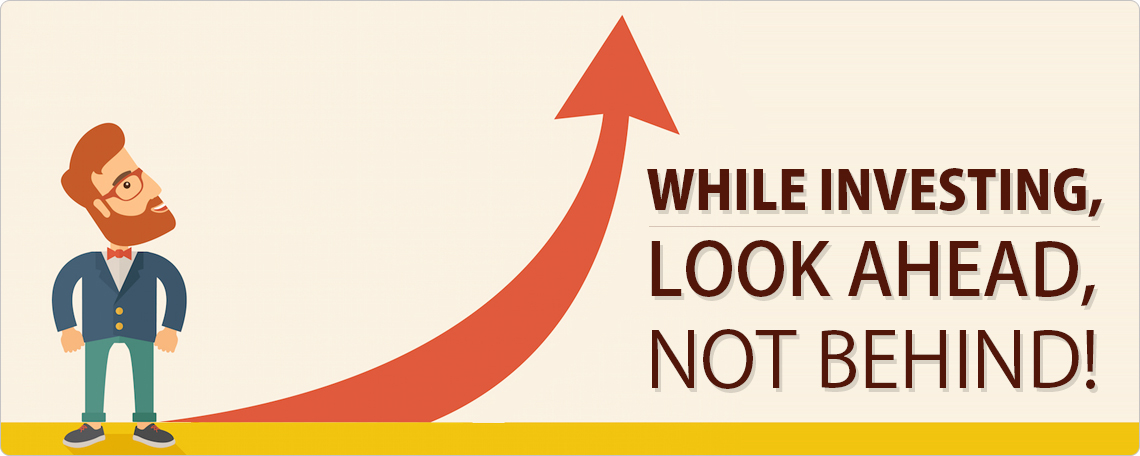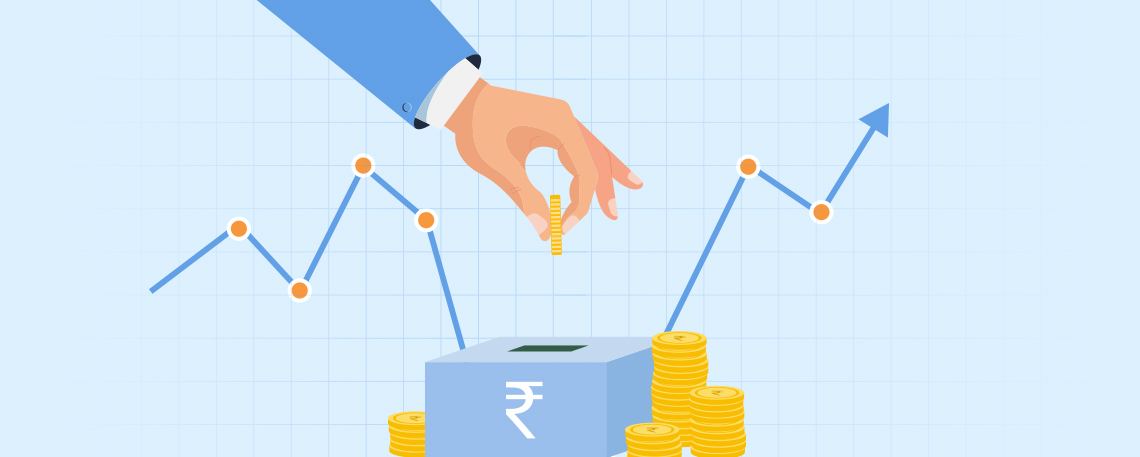Use The P/E Ratio Smartly!
November 09, 2017
|
Here is a question. When you are driving, do you look at the road behind you through the rear-view mirror or do you focus on the road ahead by looking through the windscreen? Your answer would naturally be that you do both. However, in which direction do you focus more? Behind or ahead? We hope your answer is ‘Ahead’! In case of investing, the price-to-earnings ratio (or P/E ratio) has a similar connotation.
As an investor, you probably use the P/E ratio of a stock to make your investment decisions. Perhaps you believe the P/E ratio of a stock to be one of the most important factors. The key question is – which P/E ratio do you consider? Before you answer this question, let’s do a quick recap of what a P/E ratio is. This ratio, which is computed by dividing the current market price of the stock by its earnings per share (EPS), shows how much investors are willing to pay for each rupee earned by the company. The tricky part is the EPS that you need to consider. You may believe that you should naturally consider the EPS of the last 4 quarters declared by the company. That is where most investors go wrong. By using the last 4 quarters’ EPS, you are computing the ‘trailing’ P/E ratio. Remember, the past is the past… what is important is the future – while this applies in life, it applies in equity investing too.
P/E Ratio
Earnings per Share (EPS)
EPS
Number of outstanding shares
Trailing P/E Ratio
EPS of the last 4 quarters
Forward P/E Raio
Expected EPS
When you are making an investment decision, you must consider what the company can be expected to sustainably earn in future, from which you will earn your investment rewards. In other words, you must consider the EPS the company is expected to earn, going forward. This is done by assessing the future earnings growth the company is expected to achieve considering its management strength, current situation, its order book, new markets it plans to capture, new products and their potential, etc.
- Trailing P/E is based on the past
- Forward P/E is based on the future
- While investing, the future is more important than the past!
The trailing P/E is misleading – a practical example
Let’s consider the example of Eicher Motors, a company that not only revived, but achieved phenomenal growth as a result of a strong management led by Siddhartha Lal. When Siddhartha took control of Eicher in 2000 at the young age of 26, the company was about to shut down. He turned the loss-making Eicher into India's most profitable bike maker, selling over 650,000 bikes a year from just 30,000 a decade ago, and the rest is history. From a meagre $20 million market capitalisation in 2001, Eicher Motors become a $13 billion company (as on March 2017). Over the last 7 years, the company’s EBITDA margins have expanded from about 10% to more than 31% currently, making it one of the most profitable automobile companies in the country.
Eicher Motors - Forward P/E Computation
| Dec 2010 | Dec 2011 | Dec 2012 | Dec 2013 | Dec 2014 | Mar 2016 | Mar 2017 | |
|---|---|---|---|---|---|---|---|
| EPS (Actual) | 28 | 46 | 54 | 103 | 206 | 362.56* | 573.75 |
| Forward P/E^ (As on Dec 2010) | 23.04 | 14.02 | 11.95 | 6.26 | 3.13 | 1.78 | 1.12 |
Stock Price of Eicher Motors as on 30.03.2010 was Rs. 645.10
*March 16 EPS has been annualized since the declared EPS was for 15 months
^ Considering the forward P/E (which sharply fell from the range of 23 to a little more than 1), one can see that Eicher was available at an extremely attractive price
If an investor had bought shares of Eicher in the year 2010 when the company was quoting at a trailing P/E of about 23, he would have actually purchased the stock at a very low price considering its forward P/E (which was about 14 considering the EPS of December 2011 and trailing down to a little more than 1 considering the EPS of March 2017). Considering the current price of the stock (Rs. 31,439 as on 26 October, 2017), the investor would have been rewarded with a 48-bagger stock!
As a recap, to assess whether a stock is available at a ‘reasonable’ price, it’s important to consider the forward P/E multiple. This is based on the expected EPS of the stock, going forward. The expected EPS is, in turn, based on the company’s management, business outlook, the business cycle it is currently in, the current state of the economy, global trends, etc.
Happy investing!




